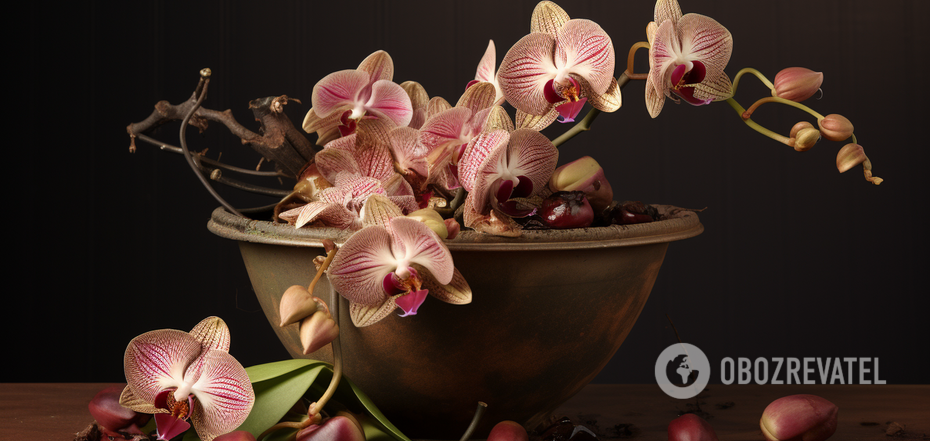Life
A plant may not survive: what mistake in winter care kills an orchid
Orchids have a reputation for being challenging houseplants to care for. But the truth is, they simply require slightly different care than most plants. In particular, you'll need to become more familiar with proper watering, especially in winter when the watering needs of potted plants change.
OBOZ.UA sought the advice of indoor plant care experts, and they shared how to properly care for and water an orchid during the winter season.
First and foremost, ensure that the orchid receives as much diffused sunlight as possible. Orchids won't thrive in a dark corner, regardless of how carefully you care for them. East or west-facing windowsills are suitable options for the plant year-round. North-facing locations will be too dim, and it might even get sunburned in the south.
Regarding watering, experts suggest that the primary criterion should be the condition of the growing medium in which the plant is potted. Water it only when the medium is almost dry, with very little moisture remaining. You don't need to let the orchid's potting medium dry out completely.
Do not adjust the watering frequency based on environmental conditions alone, as while reduced sunlight may decrease the plant's water requirements, indoor heating can accelerate the drying of both air and potting media. So, during the winter, focus primarily on the moisture content of the potting medium.
If you're concerned about the plant receiving insufficient moisture, you can occasionally mist it with a small amount of water. Be careful not to wet the leaves or leave them damp, as this can lead to mold, fungi, and leaf rot.
Apart from improper watering, another common mistake made by beginners is incorrect fertilization of the plant. Orchids require a specialized blend of nitrogen, phosphorus, and potassium. This mixture can be found in commercial orchid fertilizers and is a good choice, but pay close attention to the recommended dosage. Over-fertilization is more likely to harm the plant than under-fertilization.
Don't forget to repot the orchid when necessary. If the root system becomes too crowded in its pot or if white roots start protruding from the container, it's time for repotting. Another sign that your orchid may require repotting is if the roots appear to be rotting, soft, and brown. This could indicate that the potting medium is no longer allowing water to pass through efficiently.
When you start repotting an orchid, pay attention to two important details. First, be sure to sterilize all your tools because the plant is rather sensitive to various infections. Secondly, choose the appropriate potting medium. A universal mixture is not suitable for the plant since it retains water too effectively and hinders adequate air circulation, which can lead to root rot.
Previously, OBOZ.UA provided guidance on growing hyacinths on your windowsill.
Subscribe to the OBOZ.UA channels on Telegram and Viber to keep up with the latest events.



























